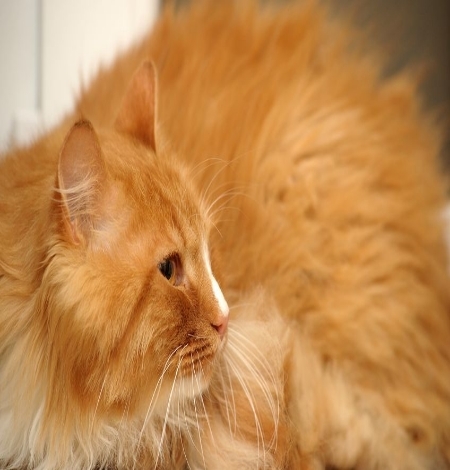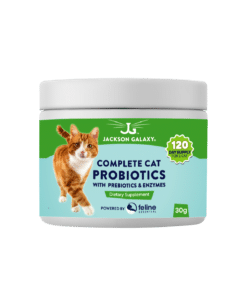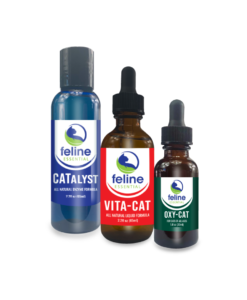Don’t you just hate coming home from a long day of work and nearly stepping on what looks like a big cat turd? Let’s face it – when you have cats, you WILL have to deal with a hairball or two at some point. However, you should NOT be dealing with hairballs every day… or even ‘regularly’. Cats are pretty awesome and groom themselves all the time… That means they will ingest a few furballs… but a cat’s digestive system is made to process a certain amount of cat hair. And it makes sense that the body would ‘purge’ what it cannot process.
Obviously, very furry, long-haired cats may have a bigger issue in this area, but it should still be rare. For example, our Pooh Bear is one of the furriest creatures we’ve ever encountered… Number of hairballs in the last two months? One. But it wasn’t always this way… Over the years, I’ve collected my top 3 reasons that a cat’s hairballs won’t stop – and how we can help change that!
1. Excessive Shedding
When grooming (licking) themselves, cats will obviously ingest some hair – and their bodies are made to handle this habit. Vomiting hairballs on a daily – or regular basis in not normal – or healthy. Cats will shed (or blow) their coats – usually twice a year – but consistent excessive shedding is not normal. The condition of a cat’s hair follicle is directly related to his nutrition. If your cat is shedding heavily and vomiting hairballs all the time, feeding a species appropriate, fresh food diet can improve your kitties coat, and health of the hair follicle – to reduce shedding.
2. Digestive Problems
If your cat is frupping up those furballs all the time and doesn’t have a shedding problem, the issue may be rooted in his digestive system. As mentioned, cats digestive systems are made to process through a certain amount of ingested cat hair. Consider adding in some natural supplements to the diet – like digestive enzymes. We’ve also found that a small amount of coconut oil (added to wet food, or applied to your cat’s paw to lick off) can also aid in the smooth passage of digested hair.
3. Grains in the diet
They call it a theory, but I have seen the results in 6 of my cats first hand – over the years… The theory is that cats never evolved to process grains. Cats are obligate carnivores – meaning they must have real meat in their diet – and have no biological requirement for carbs or grains. There’s a theory that because cats are not meant to digest a diet high in grains/carbs (which is what most kibble/dry diets are made of), their digestive tract becomes clogged – making it much easier for hairballs to come back up then to pass on through.
Before we started feeding our littles ones a fresh diet, it was not uncommon to find multiple hairballs each week. Now, with our babies on a good diet, we might see hairball from one of our floofiest kitties once in a very blue moon – usually right before summer when he’s blowing his coat.
So there you have it. The good news is that it only takes small, consistent changes to stop the excess shedding, hairballs and vomiting in your home.
Recommended Product for Hairballs





Recent Comments